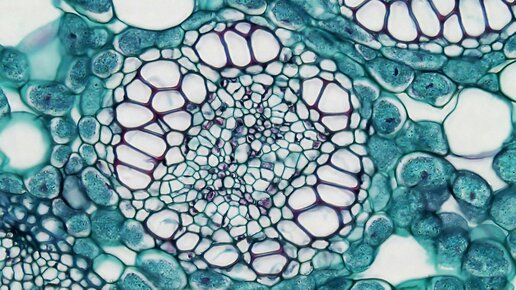Fibre is an important part of our diet. Some soluble plant food fibres serve as food for useful intestinal bacteria by converting them into short-chain fatty acids, lactate and other valuable metabolites. But what exactly is fibre, and why is it so important? Learn how fibre can not only aid digestion, but also reduce the risk of chronic diseases. Immerse yourself in the exciting symbiosis between humans and microorganisms and discover how a fibre-rich diet can have a positive effect on your well-being.
What is fibre?
Fibre is predominantly found in plant-based foods, i.e. carbohydrates. A distinction is made between water-soluble and water-insoluble fibre. Fibre is largely indigestible for the human organism. Nevertheless, it is now seen as an important component of human nutrition.
Sometimes the term raw fibre is equated with roughage, but this is not entirely correct. A lot of roughage is rich in raw fibre, but does not consist solely of cellulose fibre.
Soluble fibre
Soluble fibre dissolves in water and forms a gel-like substance. They serve the intestinal bacteria as food and are also called prebiotics. They can also positively affect blood sugar levels and cholesterol levels by slowing the sugar intake and reducing the amount of cholesterol that enters the bloodstream.
Water-soluble fibre representatives are, for example, resistant dextrin, acacia fibre, citrus pectin, fructane, pectin, inulin and carageen.
Sources:
- Oat flakes
- Apples
- Citrus fruits
- Carrots
- Barley
- Legumes (e.g. beans, lentils, peas)
- Psyllium husks
Insoluble fibre
Insoluble fibre does not dissolve in water and remains largely unchanged as it migrates through the digestive tract and is then excreted. It helps increase stool volume and encourages regular bowel movement, which helps to prevent constipation and promote bowel health.
Water-insoluble representatives of fibre are beta-glucans, cellulose, lignin or xanthan.
Sources:
- Whole grain products (e.g. whole grain bread, brown rice)
- Wheat bran
- Nuts
- Seeds
- Cauliflower
- Green beans
- Potatoes (with skin)
Where is fibre found?
In its natural state, fibre is found primarily in whole grain products, fruits, vegetables, legumes and nuts or seeds. For those who struggle to absorb enough fibre through their diet, supplements can be a useful addition. These are available in various forms: Powders or capsules are usually used here.
Functions: The effect of fibre in the body
The indigestibility of most fibre is due to the fact that the human digestive tract does not have an enzyme for its digestion or it cannot be transported through the cell membrane of the intestine into the intestinal mucosa due to the lack of transport proteins.
We humans have a number of different “transporters” in the intestine – these are special proteins – which transport sugars such as glucose or other nutrients into the intestinal mucosa, for example, from where they can later enter the bloodstream. The different fibres differ in their indigestibility. Some are completely indigestible, others only partially.
Despite or precisely because of their indigestibility, fibre fulfils some important functions in the human body:
Effect in the stomach: Long-lasting feeling of satiety
Fibre increases the food volume in the stomach without increasing the energy content. This way, fibre contributes significantly to the feeling of being full. It swells up in the stomach because it absorbs water. This leads to a distention of the stomach after a meal. This stretching stimulus reduces the release of the appetite-stimulating messenger substance ghrelin and can help us to feel full and not eat any more. Since fibre also causes the chyme to remain in the stomach for a longer period of time, this feeling of satiation lasts a long time.
Effect in the intestine: Important food for bacteria
The increased volume is also noticeable in the intestine due to the fibre. It thus puts pressure on the intestinal wall as part of a fibre-rich chyme. This stimulates the movement of the intestine – so-called peristalsis. As a result of the stimulation of peristalsis, the food remains in the intestine for less time. This is therefore an opposite effect to the longer duration that it stays in the stomach. In the intestine, a shorter retention time of the chyme has a positive effect, because, among other things, various toxins also remain there for less time. The fibre transports the toxins through the small and large intestine to excretion, because water-insoluble fibres pass through the digestive tract unchanged. However, there is an important point to consider: For fibre to swell, sufficient liquid is a must! Otherwise, there is a risk of constipation instead of good digestion.
In the intestine, the water-soluble fibres also serve as food for various bacteria living in the intestinal flora. The intestinal flora ferments the fibre, from which gases such as carbon dioxide, methane and hydrogen are produced. However, short-term fatty acids are also formed. These fatty acids can contribute to the nutrition of the mucosal cells in the intestinal mucosa.
Effect in the blood: Influence on blood sugar levels and blood pressure
Soluble fibres found in foods such as oats, apples and legumes play a crucial role in regulating blood sugar levels. They slow down the absorption of sugar into the blood by forming a gel-like substance that delays the digestion and absorption of carbohydrates. This leads to a more uniform increase in blood sugar levels after meals. Thus, a fibre-rich, balanced diet can reduce the risk of developing insulin resistance or type 2 diabetes.
In addition, fibre has a positive effect on blood pressure. A high fibre diet helps lower cholesterol levels by reducing the amount of cholesterol that enters the bloodstream. This supports the normal function of our cardiovascular system.
Is all fibre beneficial to human health?
There are also plant fibres that plants form for their protection. Their purpose is to protect the plant from pests. If we ingest such fibre with our food, this can lead to damage of the intestinal mucosa and our immune system.
For example, the phytic acid contained in cereals is problematic as a component of fibre. It can cause severe flatulence. In addition, some research indicates that phytic acid makes the absorption of minerals more difficult. Fresh grains are soaked overnight to reduce the phytin content.
How much fibre do we need daily?
There are various recommendations for how much fibre to consume per day. The German Nutrition Society recommends that you should consume about 30 grams of fibre daily. This fibre should primarily come from vegetables, whole grain products, fresh fruit and nuts.
Various health organisations from other countries give recommendations of over 25 grams of fibre per day. Some even assume a value of only 20 grams.
The more fibre, the better?
It is not clear whether there is an upper limit for the absorption of fibre. However, it is important to move slowly from a low-fibre diet to a more fibre rich diet. Initially, digestive disorders can occur if large amounts of fibre are suddenly introduced. In addition, it seems that the digestive systems of different people react differently to the consumption of fibre. You may be aware of this phenomenon in relation to wholemeal bread and other wholemeal products. While some people tolerate wholemeal bread that is recommended as healthy, others may experience digestive symptoms.
Statistical surveys currently point out that too much fibre is hardly something to be feared. Most people in Germany admit that they consume considerably less fibre than the recommended 20 to 30 g per day. Most of the fibre comes from cereals, while fruit and vegetables tend to hover in the background. Nutritional experts see it as healthier to eat more fruit and vegetables. In order to benefit from the positive effects of increased fibre intake on intestinal peristalsis, it is also important to ensure adequate fluid intake.
Biogena ColonBalance® practice test
More fibre, better well-being
The more bacterial types that colonise the intestine, the better. A large variety of bacteria contributes to a stable intestinal flora, which is well armed against disorders of all kinds. With this in mind, prebiotics have become essential tools to support the microbiome balance. This is important because favorable bacterial colonisation is not only associated with digestive processes and bowel functions, but also with the metabolism and the mind and thus with well-being. However, good intestinal bacteria find life difficult, because fibre absorption is much too low in developed western countries.
Focus of the study
As early as 2018, a BIOGENA observational study showed the positive effects on well-being of fibre. The focus was on people with bowel problems and the alleviation of symptoms through the use of fibre. The results of this product test are consistently positive. More soluble fiber in the form of Biogena ColonBalance® led to better well-being and quality of life. The current practical test is aimed at illustrating whether the increase in fibre intake by taking ColonBalance® for several weeks shows beneficial effects in healthy subjects.
The method
A total of 45 healthy subjects participated in the observational study and took 10 grams of BIOGENA ColonBalance® daily for 4 weeks. A stool sample was collected at the start and end of the study period, which was analysed using the most modern 16S Next Generation DNA Sequencing method. In addition, the participants participated in a well-being survey using a WHO-5 questionnaire.
Research results
Both diversity and biodiversity increased significantly in the present interventional study with ColonBalance®. Thus, biodiversity increased by 19% on average in 73% of participants. The Shannon index was considered to be a diversity advocate, increasing in 66% of participants. In addition to the preventive effects for obesity, increased diversity in the literature is associated with reduced triglycerides, HbA1c and liver enzymes (ALT, AP, GGT) as well as blood pressure. This makes it clear what far-reaching effects the intake of ColonBalance® could have in the long term by improving diversity.
In the current study with healthy subjects, a 168% increase in probiotic bifidobacterium was also recorded. That is 2.7 x more bifidobacteria than normal. In addition to the positive effects on metabolic health, bifidobacteria were attributed in meta-analyses to preventive effects against colon cancer, irritable bowel syndrome and liver diseases.
In addition, a positive effect on mental well-being was observed in the study. After the 4-week intervention, the participants had an average WHO-5 total value increase of 13%.
The positive effects of ColonBalance® were achieved independently of fibre consumption from food. This is due to the unique combination of prebiotic fibres, which are very rare in conventional foods. ColonBalance® therefore offers health benefits in every diet and is equally beneficial in high fibre consumption.
Frequently asked questions about fibre
- Pulses/legumes: Lentils, beans, chickpeas
- Whole grain products: Whole grain bread, oatmeal, quinoa
- Fruit: Apples (with peel), pears, berries (e.g. raspberries)
- Vegetables: Broccoli, carrots, artichokes
- Nuts and seeds: Chia seeds, flaxseeds, almonds
- Psyllium husks
Prebiotic fibre is particularly beneficial for the intestines because it serves as a food for the beneficial intestinal bacteria and promotes their growth. Key prebiotic fibre includes inulin and oligofoructose found in foods such as chicory root, onions, garlic, asparagus and bananas.
This fibre helps to keep the intestinal flora in balance by supporting the growth of healthy bacteria such as bifidobacteria and lactobacilli. In addition, soluble fibres from oats, apples and legumes aid the digestion by binding water and forming a gel-like substance that regulates bowel activity. A varied diet rich in fibre therefore contributes significantly to the health of the intestine and can prevent digestive problems such as constipation and diarrhoea.
No, yoghurt is usually not high in fibre. Fibre is mainly found in plant-based foods such as fruit, vegetables, whole grain products, nuts and seeds. However, yoghurt – if the right strains of bacteria are used for fermentation – contains probiotics that are good for intestinal health.
Food is considered high in fibre if it contains at least 5 grams of fibre per serving. This amount helps to contribute significantly to daily fibre intake and aids digestion, overall health and well-being.
Further reading:
Ambalam, P., Raman, M., Purama, R. K., & Doble, M. (2016). Probiotics, prebiotics and colorectal cancer prevention. Best practice & research Clinical gastroenterology, 30(1), 119–131.
Ballini, A., Charitos, I. A., Cantore, S., Topi, S., Bottalico, L., & Santacroce, L. (2023). About functional foods: The probiotics and prebiotics state of art. Antibiotics, 12(4), 635.
Bevilacqua, A., Campaniello, D., Speranza, B., Racioppo, A., Sinigaglia, M., & Corbo, M. R. (2024). An Update on Prebiotics and on Their Health Effects. Foods, 13(3), 446.
Brähler, E., Mühlan, H., Albani, C., & Schmidt, S. (2007). Teststatistische Prüfung und Normierung der deutschen Versionen des EUROHIS-QOL Lebensqualität-Index und des WHO-5 Wohlbefindens-Index. Diagnostica, 53(2), 83–96.
Gong, H., Gao, H., Ren, Q., & He, J. (2022). The abundance of bifidobacterium in relation to visceral obesity and serum uric acid. Scientific Reports, 12(1), 13073.
Guillon, F. (2011). Kapitel 24: Dietary fibre functional products. In: Functional Foods. A Volume in Woodhead Publishing Series in Food Science, Technology and Nutrition. Woodhead Publishing, Elsevier. 2. Auflage. S. 582–622.
Järbrink-Sehgal, E., & Andreasson, A. (2020). The gut microbiota and mental health in adults. Current opinion in neurobiology, 62, 102–114.
Manor, O., Dai, C. L., Kornilov, S. A., et. al. (2020). Health and disease markers correlate with gut microbiome composition across thousands of people. Nature communications, 11(1), 5206.
Marzorati, M. et al. (2015). Addition of acacia gum to a FOS/inulin blend improves its fermentation profile in the Simulator of the Human Intestinal Microbial Ecosystem (SHIME®). J Funct Foods. 16:211–22.
Menni, C., Jackson, M. A., Pallister, T., Steves, C. J., Spector, T. D., & Valdes, A. M. (2017). Gut microbiome diversity and high-fibre intake are related to lower long-term weight gain. International journal of obesity, 41(7), 1099–1105.
Mudgil, D., Barak, S. (2013). Composition, properties and health benefits of ingestible carbohydrate polymers as dietary fiber: A review. Int J Biol Macromol. 61:1–6.
Olveira, G., & González-Molero, I. (2016). An update on probiotics, prebiotics and symbiotics in clinical nutrition. Endocrinología y Nutrición (English Edition), 63(9), 482–494.
Phelps, N. H., Singleton, R. K., Zhou, B., Heap, R. A., Mishra, A., Bennett, J. E., … & Barbagallo, C. M. (2024). Worldwide trends in underweight and obesity from 1990 to 2022: a pooled analysis of 3663 populationrepresentative studies with 222 million children, adolescents, and adults. The Lancet.
Pinart, M., Dötsch, A., Schlicht, K., Laudes, M., Bouwman, J., Forslund, S. K., ... & Nimptsch, K. (2021). Gut microbiome composition in obese and non-obese persons: a systematic review and meta-analysis. Nutrients, 14(1), 12.
Quigley, E. M. M. (2017). Bifidobacterium longum. In The Microbiota in Gastrointestinal Pathophysiology (pp. 139-141). Academic Press.
Schellekens, H., Torres-Fuentes, C., van de Wouw, M., Long-Smith, C. M., Mitchell, A., Strain, C., ... & Cryan, J. F. (2021). Bifidobacterium longum counters the effects of obesity: Partial successful translation from rodent to human. EBioMedicine, 63.
Viebahn, I., & Fäth-Neubauer B. (2018). Effekte einer prebiotischen Intervention auf Darmbeschwerden, Wohlbefinden und Mikrobiom-Diversität. Information für Ärzte und Therapeuten (BIOGENA).
Zaman, S. A., Sarbini, S. R. (2016). The potential of resistant starch as a prebiotic. Crit Rev Biotechnol. 36(3):578–84.
Zsálig, D., Berta, A., Tóth, V., Szabó, Z., Simon, K., Figler, M., … & Polyák, É. (2023). A review of the relationship between gut microbiome and obesity. Applied Sciences, 13(1), 610.










